As you know, Galicia is very coastal, with the Cantabrian Sea to the North and the Atlantic Ocean to the West. According to the INE, it has around 1498 kilometres of coastline divided between its three provinces with coastline, namely Lugo, A Coruña and Pontevedra, being the leading region of Spain in this sense. In addition, this coastline differentiates the Rías Altas, from Ribadeo to Finisterre, and the Rías Baixas, from Finisterre to A Guarda. Beyond the gentle estuaries, in Galicia you will find wild cliffs, and, of course, some of the best and most fabulous beaches.
In this article, we’re going to recommend the best beaches in Galicia to visit along the different stages of the Camino de Santiago, many of which will offer more than just a refreshing dip. For this not-so-easy selection, we will travel from North to South.
Las Catedrales Beach (Ribadeo, Lugo)
Its real name is Playa de Augas Santas, but due to its characteristic morphology, reminiscent of the arches and naves of a cathedral, it is known as Playa de las Catedrales, the best in the region of A Mariña lucense. A real work of art, in fact it has been declared a Natural Monument and is a Site of Community Interest.
Situated just after entering Galicia from Asturias, overlooking the Cantabrian Sea, it is about 10 kilometres from the city and capital of the municipality to which it belongs in the province of Lugo. Ribadeo is the city and capital of the municipality to which it belongs in the Province of Lugo, and one of the main towns of the The North Way.
This beach is one of the most visited places in Galicia, and in fact in high season, due to the large influx of tourists is necessary to book, free of charge, if you want to visit. You must do it, and in this link you can find out how, but make sure the tide is low, otherwise you won’t appreciate it as it deserves.
Covas Beach (Viveiro, Lugo)
It is an urban beach, very close to the city centre of Viveiro, city and capital of the municipality of the province of Lugo to which it belongs. With about 1.5 kilometers of fine sand and shell-shaped, in high season has a lot of tourists. Several rocky shapes dot its inlet in the Viveiro estuary, called “castelos” (castles in Galician), where once upon a time Several ships were wrecked; the most famous was the case of the Fragata Magdalena, which in 1810 succumbed to a strong storm and a father and son of the crew died, and since then, the Navy forbade two members of the same family to travel on the same ship.
Beach of A Frouxeira (Valdoviño, A Coruña)
In the town and municipal capital of Valdoviño, region of Ferrolterra and Province of A Coruña, extends this fabulous sandy area of about 3.5 kilometres in length. A Frouxeira Beach is a protected natural area, with its homonymous lagoon of great ornithological importance. It is also a mecca for surfing, as national and even international championships are held there. In fact, in the city centre you can visit the only museum dedicated solely to surfing in Spain, the Ocean Surf Museum.
Playas del Trece (Camariñas, A Coruña)
It cannot be absent in this list some of the beaches of the Costa da Morte, and we are left with the fabulous set that form the Beaches of Trece belonging to the City Council of Camariñas in the Route of the Lighthouses. A practically unspoilt natural environment, facing the Atlantic Ocean, between the dunes of Monte Branco and the English Cemetery and Punta do Boi, where among several shipwrecks, highlights the British torpedo cruiser HMS Serpent in 1890. A protected environment and wild nature, where you can choose any corner as you will surely be alone in its sandy beaches.
Carnota Beach (Carnota, A Coruña)
With its 7 kilometres of sand, it is considered one of the longest in Galicia. Located in the bucolic village of Carnota, capital of the municipality of the same name in the province of A Coruña, is shaped like a half-moon and is only interrupted by a stream that leads to the sea. A protected area of great environmental value, to the north it is enclosed by the great granite mass of Monte Pindo, the Celtic Olympus, which is followed by the famous Ézaro Waterfalls. In the village of Carnota, after bathing, you can enjoy an aperitif and appreciate one of the longest hórreos in Galicia.
Beach of Baroña (Porto do Son, A Coruña)
About 500 metres long, this beach, also known as Area Longa, is located in the municipality of Porto do Son, a small fishing village in the province of A Coruña. Porto do Son, a small fishing village in the province of A Coruña. With moderate waves and not too crowded, you can find nudists there. It is closed at its northern end by the fabulous Castro de Baroña, a castreño settlement on a peninsula and in a very good state of preservation. Near the beach you have parking and bar and restaurant services.
Beach of A Lanzada (O Grove, Pontevedra)
This sandy beach of almost three kilometres is a regular in obtaining the blue flag. Near the town of O Grove, capital of the homonymous municipality in the province of Pontevedra, it is one of the most famous beaches in Galicia, with exceptional panoramic views in a protected area. Here you can practice water sports and learn about the history of the area, as at its southern end you can visit the Tower, the Castro and the Hermitage of Nuestra Señora de A Lanzada, which will tell you about timeless legends.
Rodas Beach (Cíes Islands, Pontevedra)
Perhaps one of the best beaches in Spain and Europe, when you visit it you will understand why they call it “the Caribbean”. As part of the City Council of Vigo, in the Province of Pontevedra, this beach is located in the Cies Islands, which is part of the Natural Park of the Atlantic Islands, at the exit of the Ria de Vigo and overlooking the vast Atlantic Ocean.
The beach, with a length of more than one kilometre, joins two of the islands, Monteagudo to the North and Faro to the South. To access them you have to book a place in this link and then book the ferry that can be taken in different ports of the Ría de Vigo.
The area offers basic services such as bar and restaurant, and you can enrich your visit with small hiking trails always surrounded by the sea and even diving, for which you must request permission here. Undoubtedly, one of the main tourist destinations in Galicia.
In conclusion, quality beaches, to enjoy, respect and protect.
A characteristic of the more than 700 beaches in Galicia is the low overcrowding and overdevelopment that can be found in their surroundings, with a few exceptions. In addition, in 2020, Galicia recorded a total of 107 beaches with Blue Flag certification, attesting to the quality of their waters, sands, and services. Furthermore, as we have seen, many of them are protected ecosystems of great ornithological importance. Therefore, it is everyone’s duty to respect and care for them.
In this article, we have presented some of them, and there are still many more. Are you coming to take a dip with us?
Discover the richness of Galicia along its breathtaking beaches, from the majestic Playa de las Catedrales in Ribadeo, Lugo, to the paradisiacal Playa de Rodas in the Cíes Islands, Pontevedra. The diversity of coastal landscapes, from steep cliffs to extensive sandy shores, offers a unique experience in the region.
And as you explore these natural wonders, don’t forget that Galicia is also famous as the starting point of the Camino de Santiago from Sarria. An adventure that will lead you to discover the rich culture, history, and hospitality of this land as you traverse the historic paths that have attracted pilgrims from around the world for centuries.


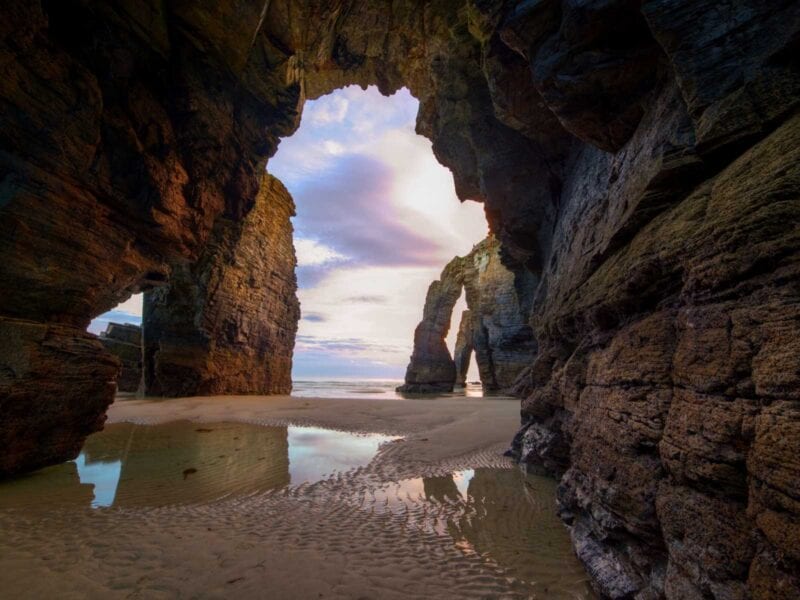
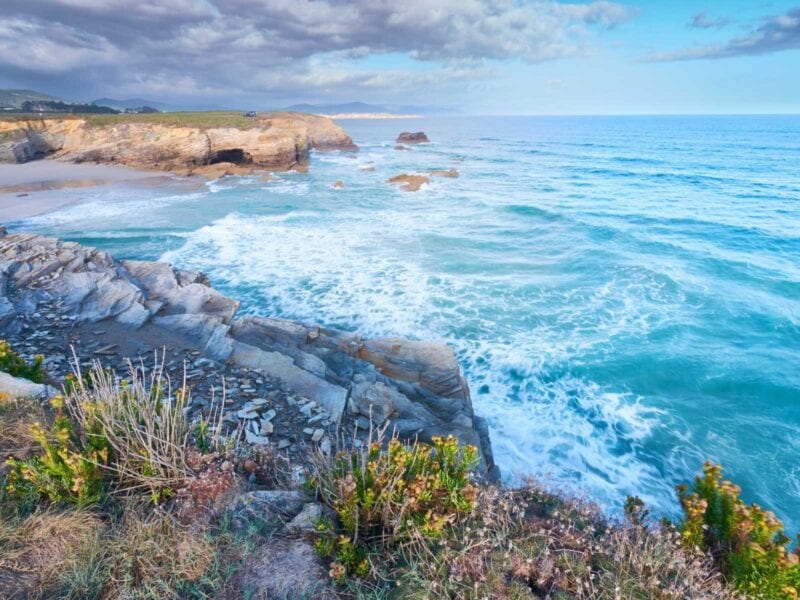
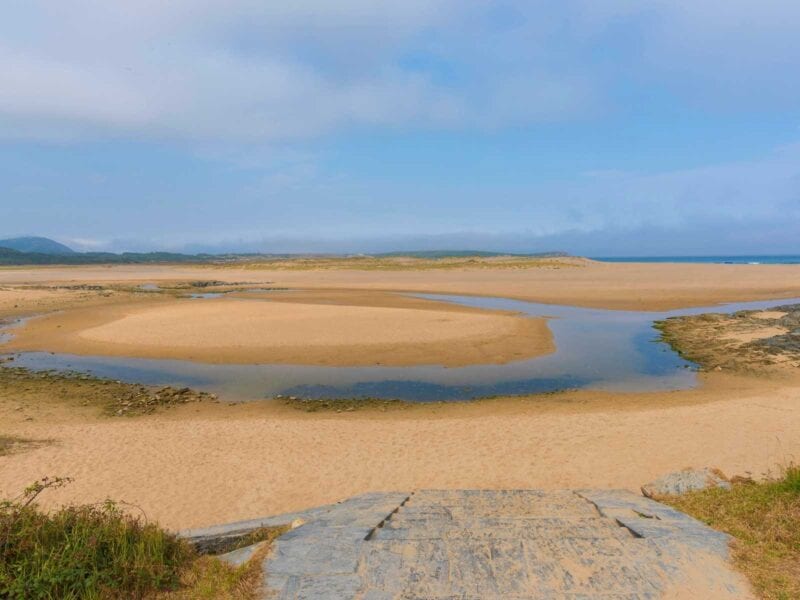
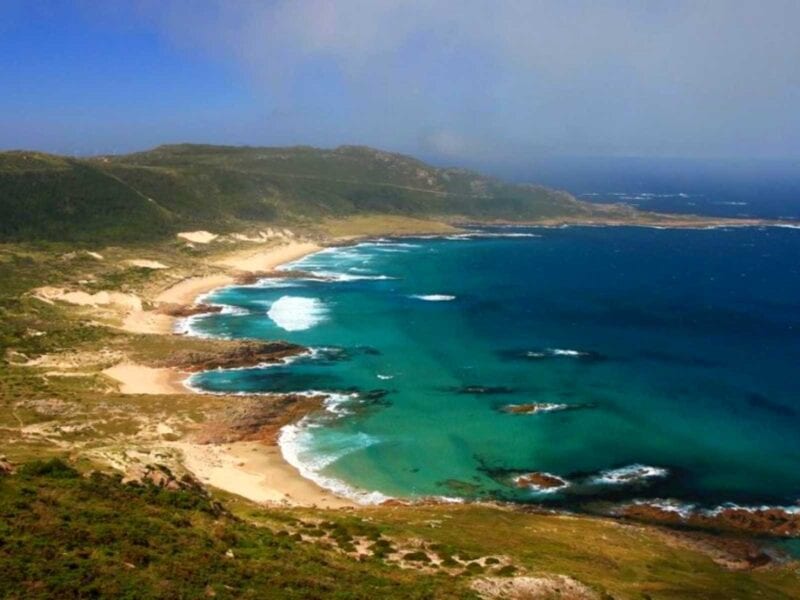
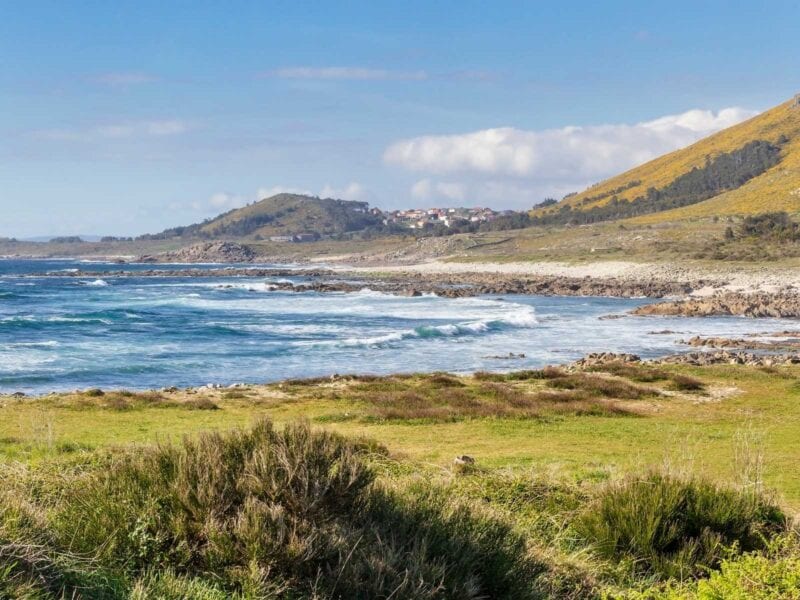
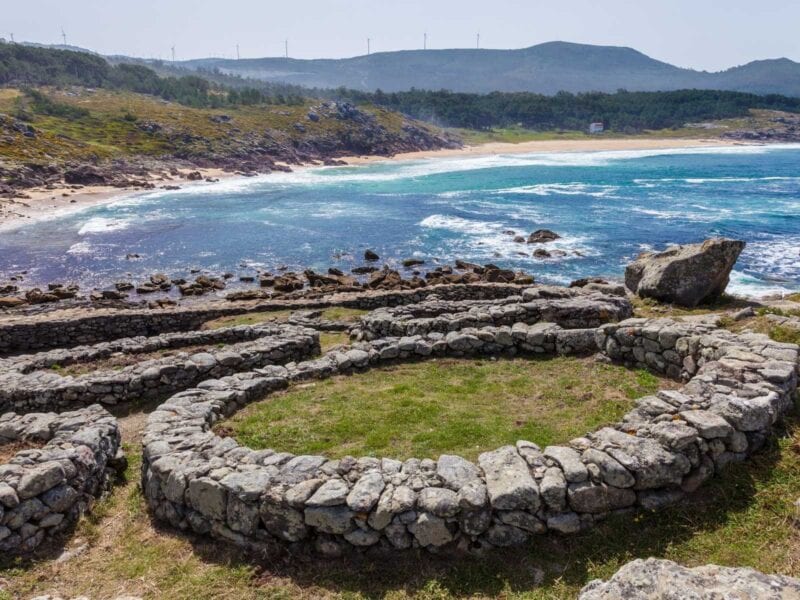
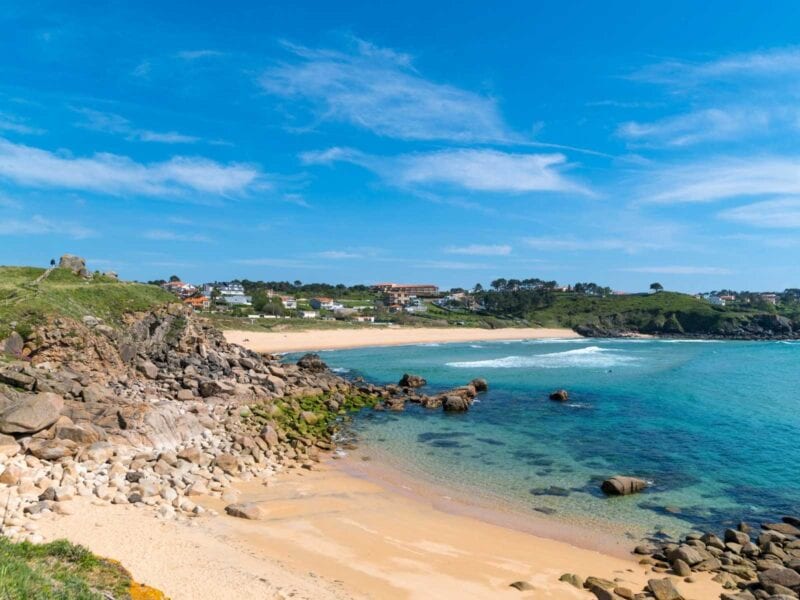
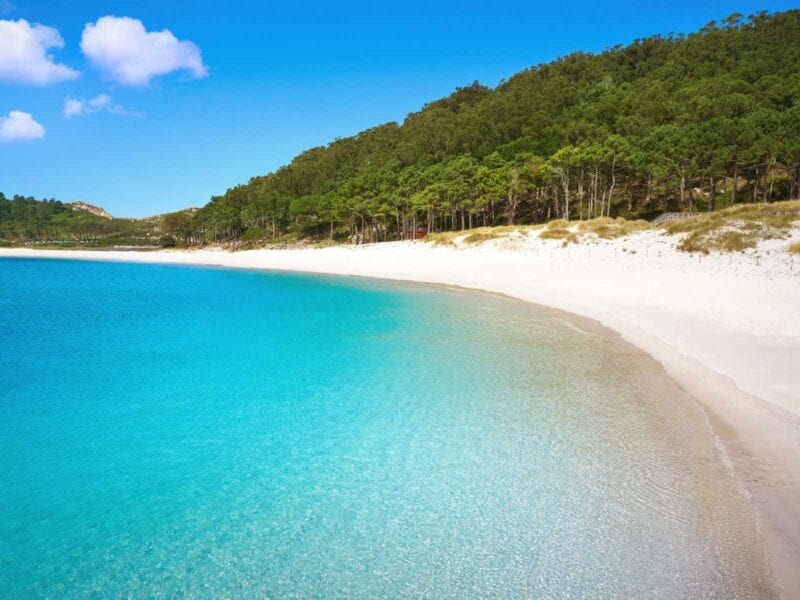
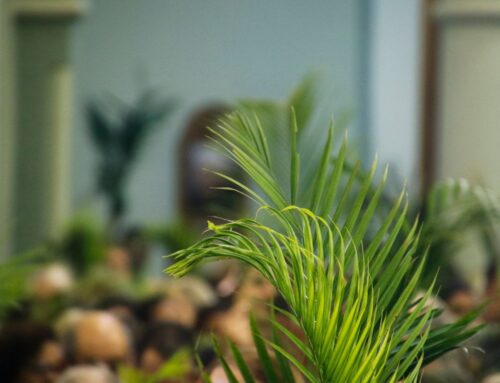
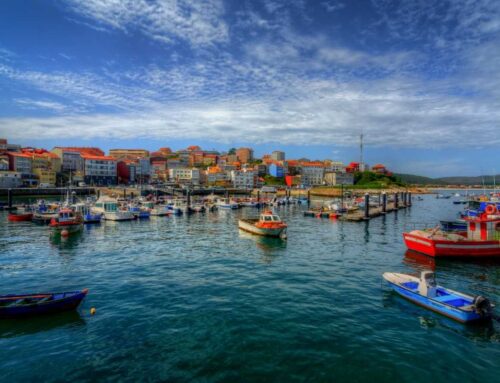

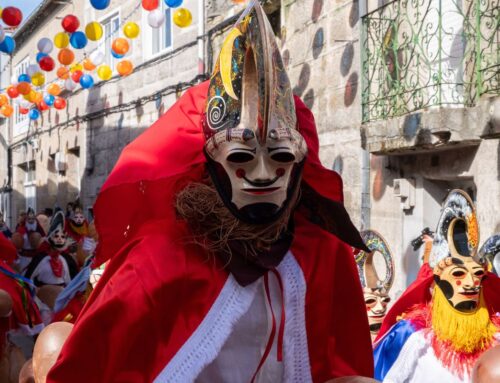
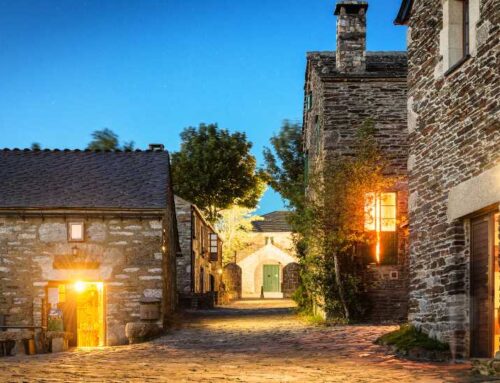

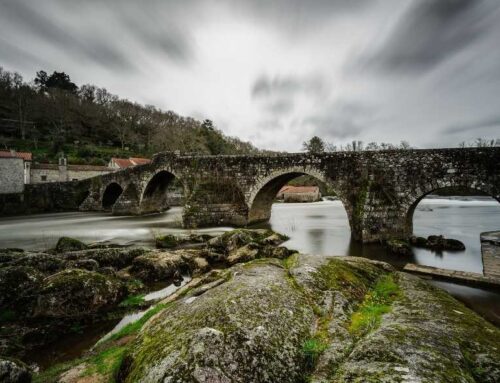
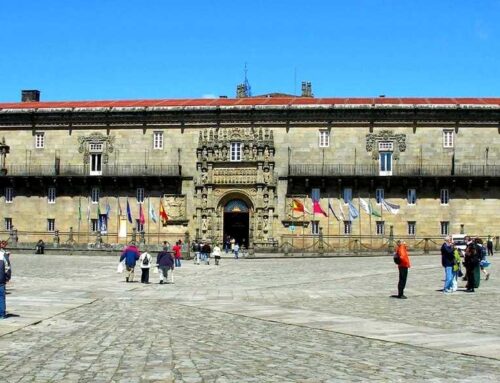
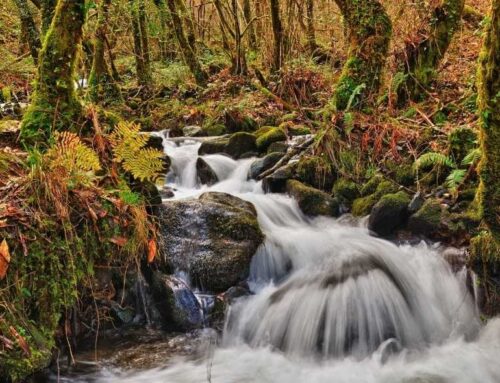


Leave A Comment